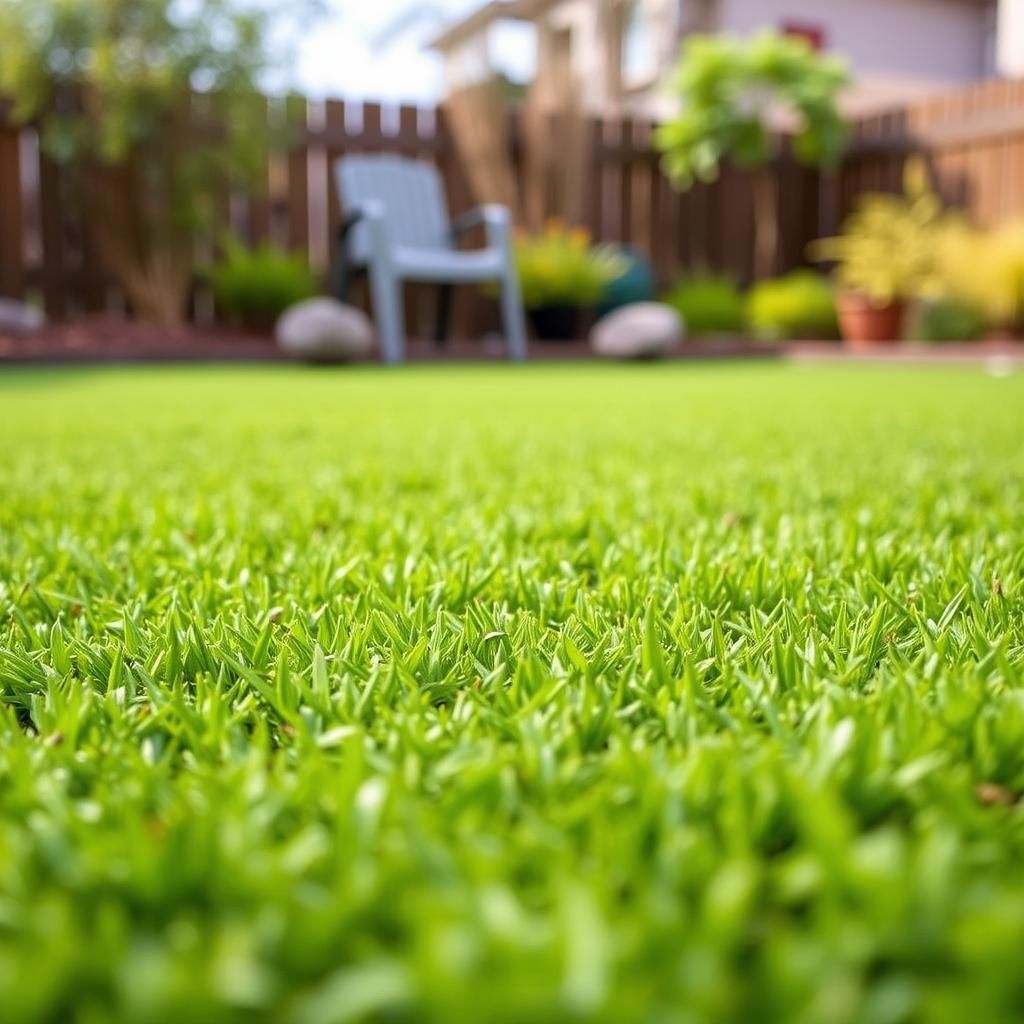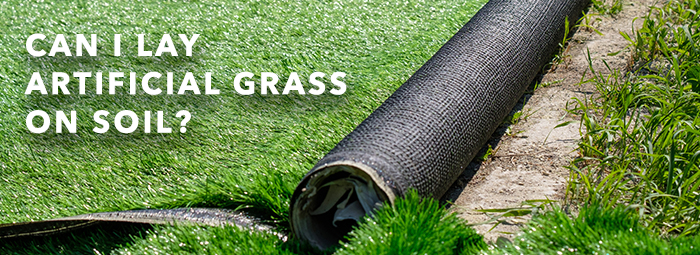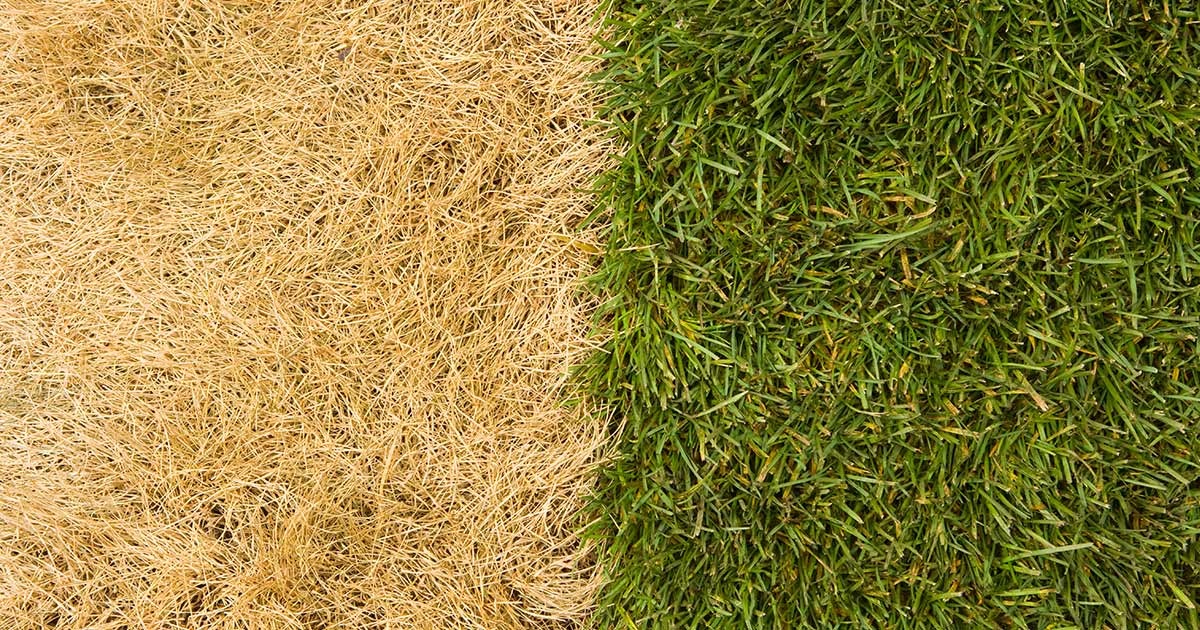Can I Just Put Turf Over Grass? A Complete Guide to Lawn Transformation

Transforming your lawn can be a rewarding project, but many homeowners wonder whether they can simply lay turf over existing grass. This guide will answer that question and provide you with a comprehensive understanding of the process. We will explore the benefits and drawbacks of sodding over grass, the necessary preparations, and expert tips to ensure a successful installation. Whether you’re looking to enhance your outdoor aesthetics or improve the functionality of your lawn, this complete guide will equip you with all the information needed to make an informed decision and achieve the perfect lawn transformation.
Can I Just Put Turf Over Grass?
While it might seem convenient to simply lay turf over existing grass, it's generally not recommended. This approach can lead to a variety of problems including inadequate drainage, root health issues, and uneven surfaces. The underlying grass may continue to grow, creating thatch buildup, which can hinder the turf's root establishment. Instead, it's best to properly prepare the area by removing the existing grass, addressing any weeds or pests, and ensuring the soil is appropriately graded and aerated for optimal turf installation.
Why Is Proper Preparation Important?
Proper preparation of the area before installing turf is crucial to ensure the longevity and health of the new grass. Without clearing the existing grass, the turf may suffer from poor root establishment due to competition for nutrients and water. Moreover, removing the old vegetation helps eliminate any weeds or diseases that might affect the turf. Additionally, prepared soil allows for better drainage, leading to a healthier lawn that can thrive in varying weather conditions.
What Are the Risks of Putting Turf Over Grass?
Putting turf over existing grass can pose several risks that compromise the new installation. The most significant challenge is the potential for thatch buildup, where the old grass continues to grow under the turf, creating an unhealthy layer that can impede water and nutrient absorption. Moreover, the turf may not settle properly, leading to an uneven surface that can impact aesthetics and usability. Lastly, pest and disease problems might persist, leading to further issues down the line.
What Steps Should Be Taken Before Installing Turf?
Before laying turf, it is advisable to take several important steps to ensure the best possible outcome. Begin by removing the existing grass and weeds using a sod cutter or by applying an herbicide. Next, till the soil to a depth of about 2 to 3 inches to improve aeration and nutrient distribution. After tilling, level the area, and then compact the soil slightly to create a solid base. Finally, consider adding a layer of topsoil or compost to enhance soil fertility and provide a conducive environment for the new turf to flourish.
What Are the Benefits of Installing Turf on Prepared Soil?
Installing turf on properly prepared soil greatly enhances the chances of success for your lawn. First and foremost, prepared soil allows for deeper-root growth, promoting a healthier lawn that is more resilient to stress factors such as drought or foot traffic. Additionally, better drainage results in decreased risk of waterlogging, which can be detrimental to grass health. Furthermore, installing turf on a well-compacted and level surface contributes to an aesthetically pleasing lawn that can be immediately enjoyed.
Can You Lay Artificial Turf Over Grass?
Yes, it is technically possible to lay artificial turf over existing grass, but just like natural turf, it is not recommended without proper preparation. Failing to remove the grass first can lead to issues like unevenness and the development of pests beneath the surface. Proper site preparation involves clearing the grass and creating a stable base, which not only improves the appearance of the artificial turf but also enhances its overall durability and lifespan.
| Step | Description |
|---|---|
| Remove Existing Grass | Clear the area of all vegetation to prevent competition. |
| Till the Soil | Loosen the soil to encourage root growth. |
| Level the Area | Create an even surface to minimize puddles and uneven growth. |
| Add Topsoil | Enhance soil quality for better nutrient uptake. |
| Lay Turf | Install the turf properly on prepared soil for best results. |
Can you put turf directly on grass?

Unfortunately, putting turf directly on grass is not recommended and can lead to several issues over time. When turf is installed on top of existing grass, it can trap moisture and create an environment conducive to rot, mold, and weed growth. Grass underneath the turf will continue to grow, potentially causing uneven surfaces and pushing the turf upwards, leading to a disturbed installation. Additionally, the treatment of the underlying grass can affect the health and durability of the added turf.
Why You Shouldn't Install Turf Over Grass
Installing turf directly over grass can be detrimental for several reasons:
- Moisture Retention: Grass underneath can cause excess moisture to be trapped, which may lead to decay.
- Weed Growth: Existing grass can contribute to weed problems as both layers compete for resources.
- Uneven Surface: Growing grass may cause the turf to shift or lift, resulting in an uneven playing field.
Preparation Steps Before Installing Turf
Proper preparation is essential for a successful turf installation:
- Remove Existing Grass: Clear the area by removing the grass entirely to prevent issues.
- Level the Ground: Ensure the surface is flat and graded for proper drainage.
- Rake and Compact: Rake the soil and compact it to provide a stable base for the turf.
Alternative Methods for Turf Installation
If you need a quick solution, consider these alternatives instead:
- Soil Amendments: Improve the soil quality before laying turf for better health.
- Install a Barrier: Lay a landscaping fabric to separate turf from existing grass.
- Using a Turf Underlay: Consider a base layer that allows airflow and prevents weeds.
Maintenance Tips for Installed Turf
Maintaining your turf is crucial for its longevity:
- Regular Cleaning: Keep the surface clean to prevent debris buildup.
- Check for Compaction: Monitor for areas that lose their structure and require aeration.
- Inspect for Damage: Regularly examine the turf for wear, seams, and potential lifting.
Costs Involved in Turf Installation
Understanding the costs can help in planning your turf installation effectively:
- Material Costs: The price of turf can vary significantly based on quality and type.
- Preparation Costs: Assess expenses for soil removal and ground leveling.
- Installation Fees: If hiring professionals, consider their labor charges.
Can you just lay artificial grass on grass?


Laying artificial grass directly over existing natural grass is not generally recommended due to several factors that can affect the longevity, look, and maintenance of the artificial turf. Here are the key considerations:
When you install artificial grass on top of natural grass, several conditions must be taken into account:
1. Uneven Surface: The natural grass creates an uneven base for the artificial turf. Over time, this can lead to uneven wear, unnecessary wrinkles, or bumps.
2. Drainage Issues: Natural grass requires good drainage. If the grass underneath is left in place, it can lead to poor drainage for the artificial grass, resulting in puddling or moisture buildup.
3. Weed Growth: Existing grass and weeds can grow through the artificial turf, creating unsightly patches and potentially damaging the integrity of the turf material.
4. Pest Problems: Grass underneath can attract pests such as insects or rodents, which may become an issue over time since the pests can infest the area beneath the artificial grass.
5. Installation Complications: Most manufacturers recommend a specific installation method that may require the removal of existing vegetation to ensure optimal performance and durability of the artificial grass.
Why Install Artificial Grass on Bare Soil?
Installing artificial grass on bare soil rather than over natural grass leads to a more stable and suitable surface for various reasons:
- Stability: A solid base helps maintain the turf's integrity.
- Drainage: Improved drainage prevents moisture build-up.
- Longer Lifespan: Properly installed artificial turf lasts longer when not layered over soil.
Preparing the Ground Before Installation
Before laying artificial grass, it is crucial to prepare the ground adequately to ensure optimum results.
- Remove Existing Grass: This prevents weed growth and uneven surfaces.
- Level the Soil: Achieving a flat surface is essential for a proper installation.
- Compact the Soil: Compacting prevents settling and preserves the turf over time.
Potential Problems from Laying Turf on Grass
Ignoring the implications of laying turf on grass can lead to various problems that might reduce the turf's lifespan and functionality.
- Moisture Accumulation: Poor drainage can cause water retention.
- Increased Maintenance: More time spent managing weeds and pests.
- Deformed Turf Appearance: Bumps or uneven areas from grass underneath.
Recommended Base Materials for Artificial Grass
Using appropriate base materials can enhance the longevity and performance of artificial grass, making it more beneficial than laying it on grass.
- Granular Base: Provides drainage and stability.
- Crushed Stone: Offers solid support while preventing weed growth.
- Sand Layer: A layer of sand can help with leveling and drainage.
Maintenance of Artificial Grass After Installation
Proper maintenance is crucial after installation to keep artificial grass looking its best and to extend its life.
- Regular Cleaning: Remove debris to prevent stains and odors.
- Brushing: Regular brushing helps maintain an upright pile.
- Weed Control: Monitor for and manage any weeds that may appear.
Can I lay turf straight on top of grass?

Laying turf directly on top of existing grass is generally not recommended. While it may seem like a quick solution to create a lush lawn, several issues can arise that could compromise the health and longevity of your new turf. The roots of the new turf need a suitable growing environment, and laying it directly over grass can prevent that. Here are some key considerations:
Potential Issues with Layering Turf
Overlapping turf on existing grass can lead to several problems:
See also:
- Lack of Air Circulation: The existing grass can trap moisture and limit the air supply to the new turf, which is essential for healthy root establishment.
- Weed Growth: The underlying grass can continue to grow, potentially competing with or harming the new turf by creating an uneven growing surface.
- Uneven Surface: Irregularities in the underlying grass can result in an uneven lawn, which may not only look unappealing but can also make maintenance more difficult.
Preparing the Ground Properly
To ensure the best results for your new turf, proper preparation is necessary:
- Mowing the Grass: If you decide to proceed without removing the grass, mow it as short as possible to minimize interference with the new turf.
- Clearing Debris: Remove any debris, such as rocks or sticks, that may hinder the new turf's establishment. This creates a cleaner surface to work with.
- Testing Soil Quality: Before laying the turf, evaluate the soil's pH and nutrient levels to correct any deficiencies that could impede growth.
Laying New Turf: Recommended Practices
When laying new turf, certain practices should be followed for success:
- Removing Existing Grass: For best results, consider removing existing grass and weeds entirely to allow the new turf to establish roots in optimal conditions.
- Leveling the Ground: After removing the old grass, ensure the soil is level to prevent water pooling, which can harm the turf.
- Applying Starter Fertilizer: Use a starter fertilizer to promote root growth and ensure the new turf receives sufficient nutrients right from the beginning.
Watering New Turf Correctly
Proper watering techniques are crucial after laying new turf:
- Initial Watering: Water the area thoroughly immediately after laying the turf to help settle the soil and provide moisture to the roots.
- Frequent Watering Schedule: For the first two weeks, water daily or every other day, gradually reducing frequency as the turf establishes.
- Avoid Over-Watering: Ensure good drainage to prevent drowning the new turf, which can lead to disease and rot.
Long-Term Maintenance of New Turf
After successful installation, ongoing maintenance is vital for a healthy lawn:
- Regular Mowing: Once the grass reaches a height of 3 inches, begin mowing to encourage thicker growth and eliminate weeds.
- Fertilization Schedule: Implement a fertilization schedule to provide essential nutrients, especially during the growing season.
- Weed Control: Monitor for weeds and apply appropriate herbicides or natural remedies to keep your new turf healthy and vibrant.
Can you put artificial turf directly on the ground?

Yes, you can put artificial turf directly on the ground, but there are several important factors to consider before doing so. Proper installation is crucial for the longevity and performance of the turf. Here are some steps and considerations you should take into account to ensure a successful installation directly on the ground.
Preparation of the Ground
Before laying down artificial turf, the ground must be properly prepared to prevent issues later on. A well-prepared surface will enhance drainage and reduce the risk of weeds.
- Clearing the Area: Remove all debris, rocks, and old grass. This will create a clean surface for installation.
- Flattening the Surface: Ensure that the ground is even and compacted. This helps prevent bumps and uneven surfaces in the turf.
- Drainage Solutions: Check for proper drainage to avoid water pooling on the turf. Installing a drainage layer might be necessary.
Choosing the Right Type of Turf
Selecting the appropriate artificial turf is vital as different types are designed for different applications, such as sports, landscaping, or recreational areas.
- Durability: For high-traffic areas, opt for more durable options that can withstand wear and tear.
- Grass Blade Height: Different heights can affect how the turf looks and feels. Choose one that meets your aesthetic preferences.
- UV Resistance: Consider turf that is resistant to UV rays to reduce fading over time.
Installation Method
When installing artificial turf directly on the ground, the method of installation is imperative for performance.
- Adhesive vs. Infill: Some installations require adhesive for securing the turf, while others may necessitate infill materials like sand or rubber to enhance stability.
- Seaming Techniques: Properly align and seam sections of turf to avoid gaps, which can detract from the overall appearance.
- Securing the Edges: Use stakes or other methods to secure the edges of the turf, preventing it from shifting.
Maintenance Considerations
Directly placing artificial turf on the ground can present unique maintenance challenges that should be addressed.
- Weed Control: Even with a properly prepared surface, weeds might still manage to grow. Utilize a weed barrier underneath the turf.
- Regular Cleaning: Routine cleaning will help maintain the aesthetic appeal and functionality of the turf. This may involve hosing down and brushing.
- Inspection: Regularly check for damage or wear, particularly in high-traffic zones, to ensure longevity.
Potential Issues with Direct Installation
Installing artificial turf directly on the ground can lead to specific problems that should be anticipated.
- Poor Drainage: If the ground isn’t properly graded, water may accumulate underneath the turf, resulting in mold or mildew.
- Surface Instability: Instability can occur if the underlying ground is not compacted correctly, leading to wrinkles in the turf.
- Temperature Fluctuations: Without a proper base, extreme temperatures can affect the turf’s durability and performance.
Questions from Our Readers
Can I just put turf over grass?
No, it is not recommended to lay turf directly over existing grass. Doing so can lead to poor drainage and uneven surfaces, which may affect the health of the new turf and its ability to establish roots properly.
What preparation is needed before installing turf?
Proper preparation involves removing the existing grass, weeds, and debris. You should also level the soil and consider adding topsoil or compost to provide a nutrient-rich base for the new turf to thrive.
Will the grass underneath affect the new turf?
Yes, grass and weeds underneath can compete for nutrients and water. If not removed, they can eventually grow through the new turf and weaken its overall health and appearance.
How long does it take for turf to establish after installation?
Turf typically takes about 2 to 4 weeks to establish. During this period, it is essential to keep the turf well-watered and avoid heavy foot traffic to allow the roots to anchor securely in the soil.
See also:

If you want to read more articles like Can I Just Put Turf Over Grass? A Complete Guide to Lawn Transformation, we recommend you check out our Turf category.
Leave a Reply
Related Articles